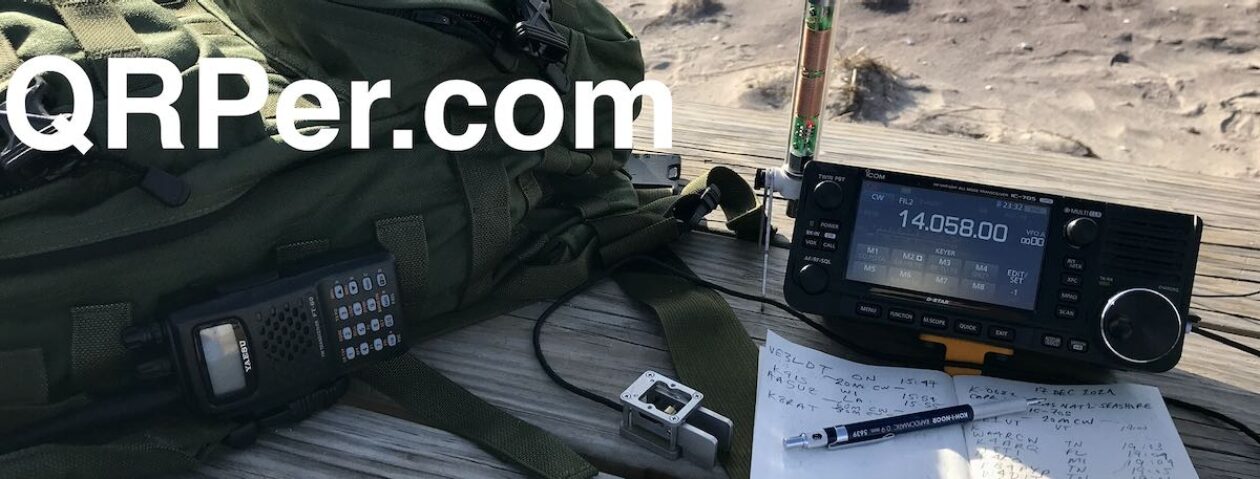 This past weekend, I posted the second of several surveys on QRPer.com asking:
This past weekend, I posted the second of several surveys on QRPer.com asking:
“If you could only have one QRP radio for all of your ham radio activities, which one would it be?”
The responses started flowing in immediately and, once again, within the first day we had already accumulated over 400 votes.
I turned off the survey at 8:00 EDT on Tuesday, May 16, 2023, with a total of 618 responses. Due to my travel schedule this week, I didn’t leave the survey open for responses as long as I did for Survey #1.
Survey Results
Here’s a pie chart showing the top 14 results in the survey. To see detail, you will need to click on the image below (or click this link) to enlarge it in a new window:
 The top choice was the Icom IC-705 which accounted for 28.8% of the 618 votes.
The top choice was the Icom IC-705 which accounted for 28.8% of the 618 votes.
 I’m not at all surprised the IC-705 was the most popular choice.
I’m not at all surprised the IC-705 was the most popular choice.
This survey focused on the one single QRP radio you’d pick to accommodate all of your ham radio activities, modes, etc. Frankly? The IC-705 does it all: HF/VHF/UHF multimode operation, DV voice (D-Star), built-in GPS, wireless connectivity for digital modes, built-in sound card, built-in Bluetooth and WiFi hotspot, built-in recording, broadcast band reception, high-performance receiver, color spectrum display and waterfall, and so much more. Heck, you can even charge its battery pack with a common Micro USB charger. Read my review if you want a more comprehensive view of the IC-705.
The only real con anyone mentioned was a lack of an ATU which, frankly, is something that’s so easy to remedy with an external ATU or by using resonant antennas.
Your second choice was the Elecraft KX2 which accounted for 20.1% of the votes.

The KX2 is such a versatile portable HF transceiver that it was the most popular choice in our first QRP radio survey. No doubt, those who chose the KX2 love playing radio in the field as their primary activity because it’s such an adept and versatile radio to take outdoors.
Your third choice was the Elecraft KX3 with 18.7% of the votes.

I actually thought the KX3 would take second place since it’s one of the highest-performance HF radios on the market and covers 160-6 meters with a 2 meter option. It’s an HF Swiss Army Knife of a radio.
In fact, during the first day of voting, the KX3 held the number two spot with as much as a 2% lead over the KX2, but as more votes rolled in, that lead narrowed and the KX2 displaced the KX3 for runner-up.
Your fourth choice was the Yaesu FT-817/818 which accounted for 10.5% of the votes.

Again, I’m not surprised the FT-817/818 ranked high among survey respondents. As I mention in a recent article, the FT-817/818 is an amazingly versatile, durable, and capable QRP radio.
It’s also the most affordable among these top contenders!
Like the IC-705, the FT-817/818 has multimode capabilities from 160-6 meters, VHF, and UHF. It also sports both SO-239 and BNC antenna ports which makes it very unique among QRP radios!
The lab599 Discovery TX-500 took fifth place with 3.9% of the votes among this set of distinguished radios.

Those who chose the TX-500 appreciate it for its 160-6 meter coverage, its unique form-factor and weight, overall performance, weather-proofing, and superb RX/TX current numbers for battery conservation. For those who like to play radio outdoors (sometimes in the rain) for hours at a time with a modest battery? Yeah, the TX-500 is made for that stuff!
Full Results…
If you would like to see the actual number of votes for each of the 48 radios in this survey, click the link below to load the rest of the page: Continue reading Survey #2 Results: If you could only have one QRP radio for all of your ham radio activities, which one would it be? →
 Welcome to another Postcard Field Report!
Welcome to another Postcard Field Report! On Tuesday, April 25, 2023, I once again stopped by my weekly POTA spot, the Vance Birthplace. By mid-May, I will no longer be passing by this excellent little POTA site on a weekly basis, so my activations here will be much less frequent. A shame because I do love this site and its staff!
On Tuesday, April 25, 2023, I once again stopped by my weekly POTA spot, the Vance Birthplace. By mid-May, I will no longer be passing by this excellent little POTA site on a weekly basis, so my activations here will be much less frequent. A shame because I do love this site and its staff!












































